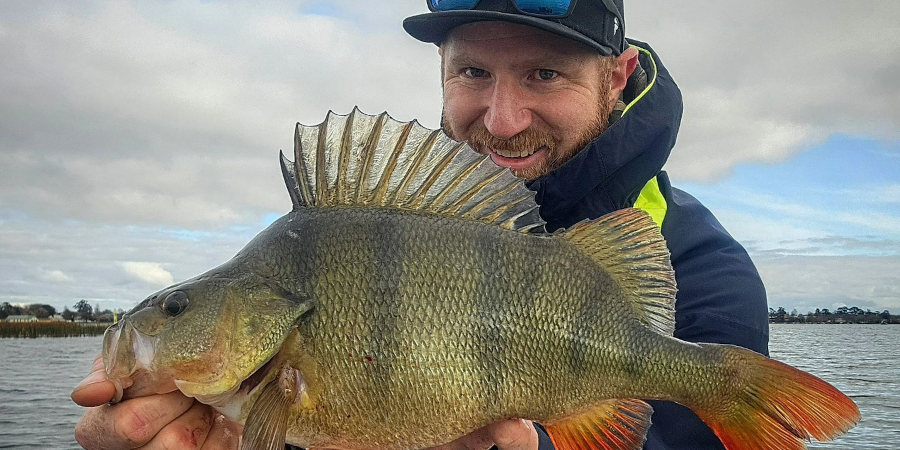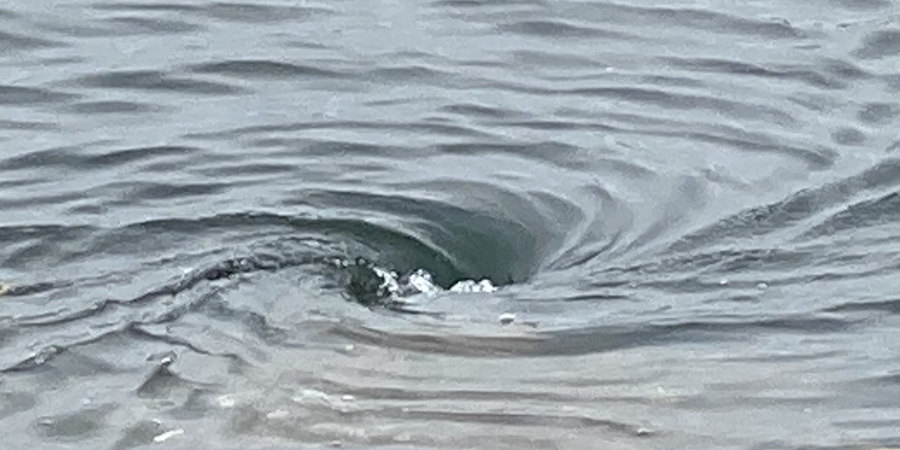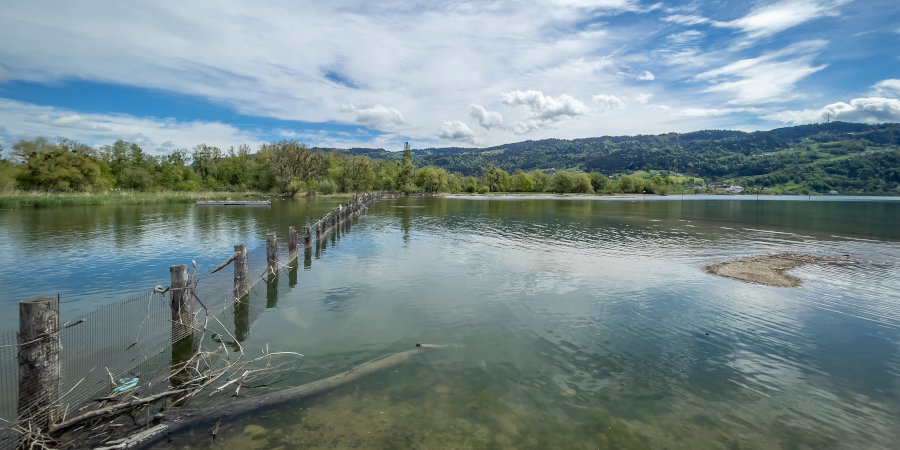

Greg’s Thoughts On Factors That Trigger Fish Feeding
- Changes in water level in freshwater dams, lakes, rivers and in estuaries. Usually rising water fishes best, but variable levels trump stable water levels.
- Water colour and clarity. Most of the times when clear water becomes slightly cloudy or slightly tannin stained there will be an associated increase in fish activity.
- Barometric pressure seems to affect the appetite of many species, but different species seem to be affected differently. There are no hard and fast rules, you’ll need to crack the code for your species and locations.
- Generally speaking, any kind of variability in weather, cloud, wind, atmospheric pressure, water temp etc will affect fish. Variability creates opportunity, stability creates slow fishing, as a rule.
- The short term abundance of food items can stimulate feeding frenzies. For example, migrating whitebait, hatching insects or other explosions in food availability.
- Wind will generally stimulate feeding in lakes and dams as well as river, estuaries and inshore locations.
- Tidal cycles and water movement are usually considered important only in marine and estuarine environments, but in freshwater impoundments there is often an increase in feeding activity around the time that tide changes occur in nearby tidal systems
- Lunar cycles are important but affect different species and locations differently. Move rise, moon set and periods of moon above or moon below can also influence feeding but need to be figured out at a local level.
- In estuaries, tides and freshwater influx are the two biggest factors affecting fish feeding as well as where they locate themselves.
- Water temperatures are important. Each species has a range of temperatures that are comfortable. They’ll often start to feed as the water temp returns to their comfort zone after a period of being too warm or too cool.
- Bile acid excreted by fish after feeding can signal to other fish that there has been feeding activity and can increase the feeding levels. Likewise, schooling fish can sometimes become switched on when other members of the school start hunting or feeding.
Your Turn:
Even before I’d uploaded this episode I’d thought of factors that didn’t get a mention. Things like sunlight, life experience, taste and smell….. the list goes on and on. Please let me know the factors you think are important but didn’t get a mention in the comments section below!
Soft Plastic Lure Fishing Hacks 101 With Greg Vinall
EPISODE # Check out our archives for more information on Botany Bay Fishing Spots!Fishing with soft plastic lures can be incredibly rewarding if you know how to use them effectively. With over 25 years of experience, I've picked up a range of tips and tricks that can...

Advanced Soft Plastic Techniques With Rory Benn-Clibborn
This interview with Rory Benn-Clibborn is EPISODE 679. Check out our archives for more information on Lure Fishing In Australia!In this masterclass, I chat with Rory Benn-Clibborn from Perch Palm Lures about various advanced techniques for fishing with soft plastic...

Mastering Stealth: Techniques for Fishing in Pressured Waters
In today’s episode we’re exploring the five top tips for catching fish in waterways that cop a lot of fishing pressure.

Finding Fish In Any Water Body
There’s a simple way to quickly and reliably identify where the fish will be congregated to feed…. and that’s the topic of todays ALF podcast episode.

Best Times To Fish. Does No Run Really Mean No Fun?
Does the rule “where there’s no run there’s no fun” hold true? Greg explores the importance of water movement in all water bodies when it comes to aggregating bait and attracting sports fish.
Soft Plastic Lure Fishing Hacks 101 With Greg Vinall
EPISODE # Check out our archives for more information on Botany Bay Fishing Spots!Fishing with soft plastic lures can be incredibly rewarding if you know how to use them effectively. With over 25 years of experience, I've picked up a range of tips and tricks that can...

Advanced Soft Plastic Techniques With Rory Benn-Clibborn
This interview with Rory Benn-Clibborn is EPISODE 679. Check out our archives for more information on Lure Fishing In Australia!In this masterclass, I chat with Rory Benn-Clibborn from Perch Palm Lures about various advanced techniques for fishing with soft plastic...

Thanks Dr Lures. Another excellent Master Class which explored the nature of the ‘bite window’ in relation to external influences which may stimulate fish to feed, and cross indexed that with previous Master Classes on Fish Vision & Lure Colour (Ep.55) and Fish Senses & Lure Sound/Vibration (Ep.30).
In my experience, no matter what the species, lure, or conditions – it all comes down to what causes fish to pay attention to a lure or fly in the first place? So, it’s not only Where (location), When (time/tide), What (lure), and How (presentation) – but WHY???
It’s said when fish aren’t feeding they must be fighting, fleeing or f’king. If that’s so, it occurs to me that only seeking to match the hatch at prime feeding times could reduce the overall odds of a hook-up – or rather, it diminishes any advantage an artificial lure or fly may have over bait.
For example, some species are known to aggressively defend their territory – however do they defend only against recognised aggressors / competitors, or something they don’t recognise but which looks like it might need to be moved along? So, might a lure attract attention not only as a potential food item, but as something which needs to be attacked or at the very least seriously inspected as a potential threat?
Equally so, might something as foreign as a lure not also come to attention as something from which to flee – as in , scoot first ask questions later?
And it’s this fight/flight response which often seems to be overlooked. As in, it’s not just about making a lure or fly highly attractive as a food substitute, but making it sufficiently interesting to encourage further attention.
However, and perhaps most importantly of all, it’s also about making the lure and its presentation non threatening, since surely the instinct to survive means the flight response is much stronger than the need to feed.
If that’s so it really surprises me that the five primary physical elements of a lure (size, shape, pattern, noise, colour) and how these are presented when intended to attract, are not also considered to have the potential to repel. What stimulates one species to strike a lure may be totally ignored by another, so it also stands to reason that what doesn’t spook one species may scare the bejesus out of another.
Another curiosity is why fish seem attracted to foodstuffs which are not part of the natural aquatic food cycle? Beef, chicken, bread, corn, maggots and cheese all come to mind. But it’s equally curious why anglers use artificial lures which represent a food source not naturally eaten by the target species. For example, why are bream attracted to a baitfish imitation when they primarily feed on crustaceans, worms, and weed/algae – not baitfish? In fact I’m yet to observe any recently ingest live baitfish in the stomach contents of a bream, but I see them all the time in flathead – yet the exact same lure attracts strikes from both species.
The only possible conclusion I can draw is that not all fish take an artificial lure or fly because they’re feeding, nor are they instinctively triggered to strike simply because we attempt to match the hatch. In fact I believe curiosity caught at least as many fish on lures as does matching the hatch.
Whether a fish is actively feeding, opportunistically grazing, exploring or defending, their life is still governed by two maxims: the quick & the dead and the early bird/fish gets the worm. So, while fish can never be too cautious, they can’t afford to be too choosy either.
As every fly fisho knows, presenting to sighted fish catches more than blind casting. So, fish where the fish are (that’s what modern sounders are for) and, without over-thinking it, leave the rest up to the fish.
However, if one wishes to stack the odds in one’s favour, present the lure at a time when the target species is most likely to be on the prowl and looking for a bit of action whether it be food or a fight or a … . And do so using anything which in general appearance & behaviour attracts attention that warrants further investigation, whether as an item of food or for some other reason.
And that’s about as much as any angler can do to improve their lot, other than spending a lifetime studying the habits and habitat of their prey – but for most that would be work not recreation.
Perhaps a future Master Class could explore in detail why fish seem compelled to strike something which seems obviously artificial, and/or is totally foreign to the natural environment. I suspect better understanding this aspect is an important piece of the puzzle which is often misunderstood when selecting a lure according to the five major characteristics and how it is then presented. And I don’t mean just matching the characteristics of lures to the attributes of fish senses – but rather digging deep into the science and observed behaviour of what individual species do when presented with or confronted by an artificial lure or fly.
Thanks for a very detailed analysis Mr Philosopher! Lots of great observations there and very little to dispute. I remember once while doing a stage presentation I asked the audience why fish eat lures. The overwhelming response was “because they’re hungry”. So invited a hapless audience member onto the stage, handed him a plastic pork chop and asked him to eat it.
We’ll never really know why fish eat our lures, of course. But I agree with you that if our assumption is always that lures are taken out of hunger we may be missing opportunities to take fish that are biting our of aggression, territorialism (is that even a word?), curiousity or annoyance.
I guess that’s why it’s so important to have a good selection of lures and to mix things up!
Greg
Another interesting episode. Im glad you brought up the barometeric pressure and the swim bladder theory. Ive heard the same many times, however, it never made alot of sense. The changes in pressure that fish experience when changing depth would be way more dramatic than changes in atmospheric pressure. In our dams bass will feed everywhere from 20+m to the surface. The pressure difference here is enormous in comparison to atmospheric. Theres no doubt that barometric pressure affects feeding, but I personally thinks its probably more to do with weather patterns.
One other factor that may be relevant is agression. While not feeding per se, fish will sometimes attack a lure out of aggression during different parts of their life cycle. Nesting tilapia, for example.
Absolutely Lee, aggression is key. Anyone who has kept an aquarium has seen how fish have a pecking order and show aggression when a less dominant fish encroaches on their space.
Curiousity is another biggie, in my opinion. As my friend Tim Simpson said in his great book “The Book Of Lures”…….. “Fish don’t have hands!” In other words, they can’t just pick something up if they’re curious about, they have to nudge it with their head or take it into their mouth to figure out what it is.
Thanks for your comment!